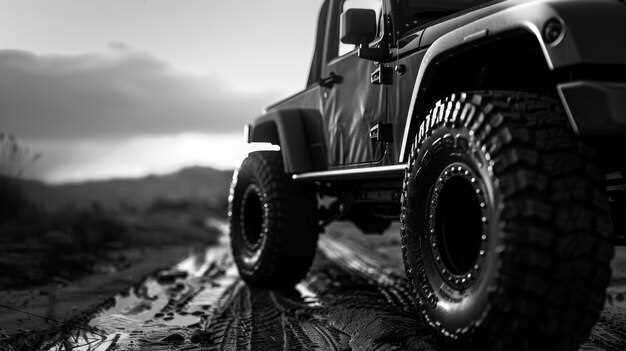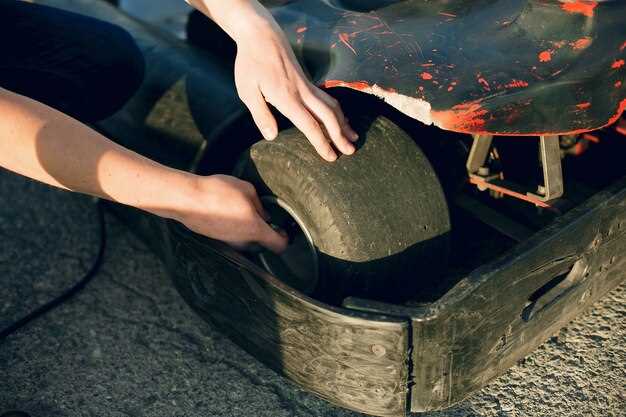
When it comes to off-road adventures, having the right equipment is crucial for maximizing both performance and safety. One of the most significant upgrades you can make to your vehicle is installing a lift kit. A lift kit not only improves ground clearance but also enhances suspension capabilities, allowing for better handling over rugged terrain.
In this article, we will explore the top lift kits available on the market that can elevate your off-road experience. These kits vary in design and purpose, catering to different vehicle types and driving styles. From budget-friendly options to high-end systems, there is a lift kit tailored to meet your needs.
Choosing the right lift kit involves understanding the specifications of your vehicle and considering how you plan to use it off-road. Whether you are an enthusiastic rock crawler or a casual trail explorer, selecting the appropriate lift kit can significantly impact your vehicle’s performance and durability. Join us as we highlight the best options that will help you conquer any terrain with confidence.
Evaluating the Best Lift Kits for Your Vehicle Make and Model

Selecting the right lift kit for your vehicle is crucial to enhance off-road performance effectively. Each vehicle make and model has its specifications, which can significantly influence the choice of lift kit. Begin by researching the specific dimensions and weight of your vehicle. This information helps in identifying lift kits designed to accommodate your vehicle’s structure.
1. Compatibility: Ensure the lift kit you choose is compatible with your vehicle’s make and model. Manufacturers often provide a list of compatible vehicles for each of their kits. Using a lift kit that isn’t designed for your specific vehicle can lead to poor performance and safety concerns.
2. Desired Lift Height: Consider how much lift you need based on your intended use. If you plan on navigating rugged terrains, a higher lift may be necessary to prevent undercarriage damage. Conversely, for moderate off-roading, a smaller lift could suffice while maintaining on-road handling and comfort.
3. Type of Kit: Lift kits come in various forms, including body lifts, suspension lifts, and leveling kits. Body lifts increase the height of the vehicle’s frame, while suspension lifts modify the suspension components. Leveling kits are designed to raise the front of the vehicle to match the rear. Assess the type that aligns best with your off-road goals.
4. Material Quality: The durability of the lift kit depends significantly on the materials used. High-quality materials such as steel and aluminum enhance longevity and performance. Investigate the materials used in the kit and look for corrosion-resistant options, especially if you plan to tackle wet or muddy terrains.
5. Installation: Evaluate whether you plan on installing the lift kit yourself or hiring a professional. Some kits are user-friendly and come with comprehensive installation instructions, while others may require specialized skills and tools. Factor in potential installation costs if you opt for professional help.
6. Performance Impact: Assess how the lift kit will affect your vehicle’s handling, ride quality, and overall performance. A higher lift can change the center of gravity, impacting stability. Reading reviews from users with the same vehicle can provide insights into the performance implications of different lift kits.
By thoroughly assessing these factors, you can confidently choose the best lift kit tailored to your vehicle’s requirements and off-road ambitions. Investing time in research will ultimately lead to better performance and an enhanced off-road experience.
Factors to Consider When Choosing a Lift Kit for Off-Road Conditions

Choosing the right lift kit for off-road conditions requires careful consideration of several factors to ensure optimal performance and safety. First and foremost, vehicle compatibility is crucial; not all lift kits are suitable for every make and model. Verify that the kit is designed specifically for your vehicle to avoid installation issues and maintain structural integrity.
Next, consider the lift height. While a higher lift can improve ground clearance and approach/departure angles, it can also affect stability and handling. A moderate lift, typically between 2 to 4 inches, often provides a balance between improved off-road capability and on-road drivability.
Suspension configuration is another critical element. Lift kits come in various styles–body lifts, suspension lifts, and leveling kits. Suspension lifts provide better articulation, which is vital for rough terrains, while body lifts primarily increase the wheel clearance. Evaluate your off-road driving style to determine which type would best suit your needs.
Material quality should not be overlooked. Lift kits made from high-grade materials, such as heavy-duty steel or aluminum, ensure durability and resist wear and tear from rugged use. Look for kits that offer corrosion resistance to prolong lifespan, especially if you frequently operate in wet or muddy environments.
Installation complexity is an important factor to consider. Some lift kits are straightforward and designed for DIY installation, while others may require professional installation due to their complexity. Assess your skills and tools available before deciding on a kit.
Finally, budget constraints should be evaluated. While it might be tempting to opt for a cheaper kit, investing in a reputable brand with good reviews can prevent future issues and additional expenses. Balancing cost with quality and features is essential for long-term satisfaction and performance.
Installation Tips and Maintenance for Optimal Lift Kit Performance
Proper installation of a lift kit is crucial for maximizing off-road performance and ensuring safety. Start by reviewing the lift kit manufacturer’s instructions thoroughly. Ensure you have the necessary tools and materials, such as wrenches, jacks, and safety equipment. It’s recommended to perform the installation in a well-lit, spacious area. Before beginning, inspect your vehicle’s suspension components for any wear or damage, as this can affect lift kit functionality.
When installing a lift kit, work systematically, starting from the front or rear of the vehicle. Detach existing suspension parts slowly to avoid damaging any components. When fitting the lift kit, ensure all parts are aligned correctly and tightened to the specified torque settings. Utilize a spring compressor if necessary, and do not skip the reinstallation of sway bar links and shock absorbers to prevent instability.
After installation, conduct a thorough check. Ensure no parts are rubbing against each other, and verify that the alignment is correct. It’s advisable to have a professional alignment done post-installation to ensure that your vehicle handles properly and tyre wear is minimized.
Regular maintenance of your lift kit is essential to preserve its performance. Inspect all suspension components every few months for signs of wear or damage. Look for leaks in shocks, corrosion on springs, and ensure that all bolts remain tight. Cleaning the lift kit components can prevent rust and other deterioration. Periodically checking the lift kit after off-road excursions can also help identify any unexpected issues early.
Replacing worn bushings and inspecting fabric or rubber parts is essential as they can wear out faster due to the increased stress from the lift. If experiencing ride quality issues, reconsider the shock absorbers, as they may need upgrading to accommodate the increased height and demand of off-road conditions.
By following these installation tips and maintenance practices, you can ensure that your lift kit performs optimally, providing you with the confidence and capability needed for off-road adventures.




